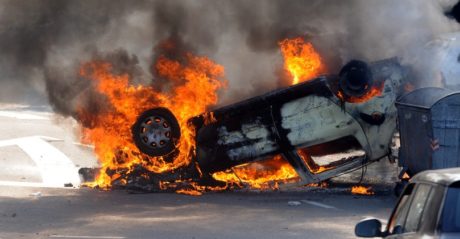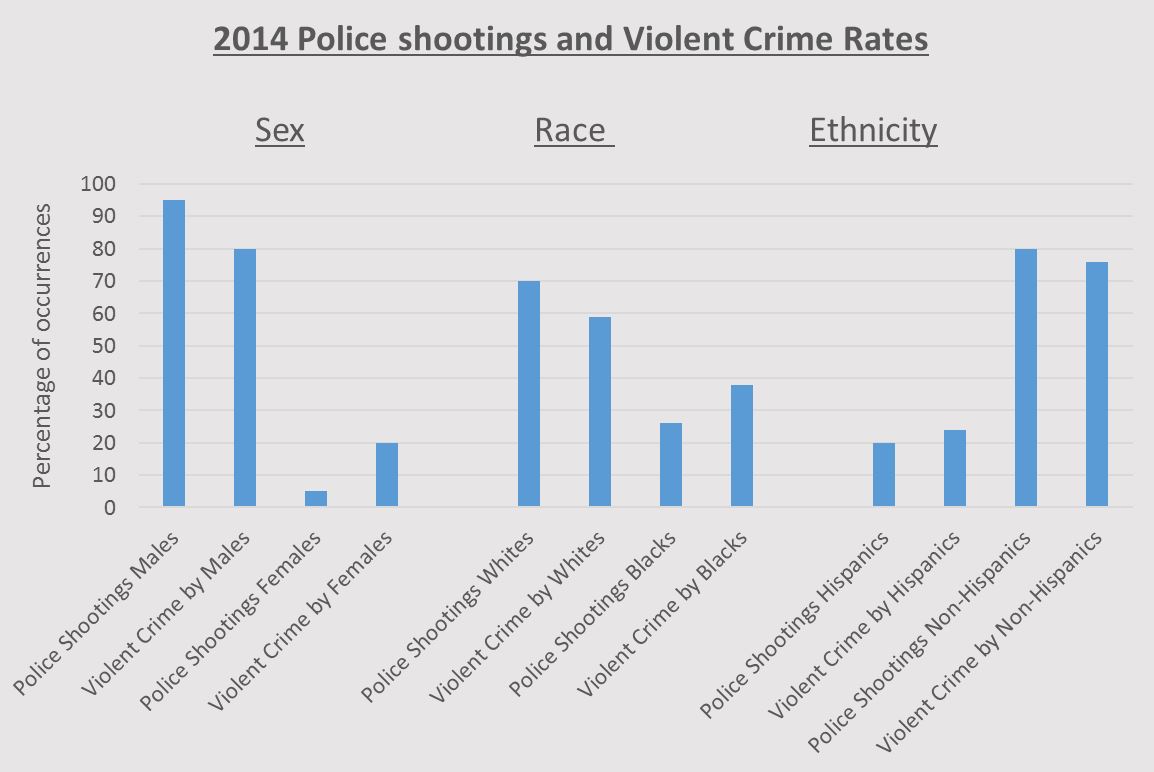What if racism is not to blame? What if there is another explanation for the police shootings involving black people?
Since the August 9, 2014, shooting of Michael Brown in Ferguson, Missouri, the same scene has replayed on national news again and again, like a nightmarish Groundhog Day movie: A black man is shot and killed by police, triggering protests and occasionally violence, and expressions of outrage across the country from community and political leaders, columnists and editorialists, entertainers and sports figures.
 To state the obvious, the anger is fueled by the belief that racism is behind the shootings. “Anyone who thinks race is not a factor in these fatal encounters,” wrote columnist Eugene Robinson after Michael Brown’s shooting, “should have to cite examples of unarmed young white men being killed by trigger-happy police or self-appointed vigilantes. Names and dates, please.” After Terence Crutcher was killed September 16, 2016, in Tulsa, Oklahoma, Hillary Clinton tweeted “Another unarmed Black man shot in a police incident. This should be intolerable.”
To state the obvious, the anger is fueled by the belief that racism is behind the shootings. “Anyone who thinks race is not a factor in these fatal encounters,” wrote columnist Eugene Robinson after Michael Brown’s shooting, “should have to cite examples of unarmed young white men being killed by trigger-happy police or self-appointed vigilantes. Names and dates, please.” After Terence Crutcher was killed September 16, 2016, in Tulsa, Oklahoma, Hillary Clinton tweeted “Another unarmed Black man shot in a police incident. This should be intolerable.”
But what do the facts show? It turns out that only about 1 in 4 fatal police shootings are of black people. In 2014, the year of Michael Brown’s death, there were 515 “legal intervention deaths” in the US, according to the US Center for Disease Control. Of those killed, 359 were white (70% of the total) while 133 were black (26% of the total). Many more white people than black people are fatally shot by police.
But there is still a racial disparity. Black people make up just 13% of the US population. If they are 26% of the shooting victims, aren’t they being shot at a rate disproportionate to their share of the population? Doesn’t that disparity prove that racism is behind the shootings?
No, for the unfortunate reason that black people commit a disproportionate amount of the violent crime in the US. According to FBI crimes statistics, black people committed 38% of the violent crimes in the US in 2014 (violent crime is defined by the FBI as murder and nonnegligent manslaughter, rape, robbery, and aggravated assault). White people committed 59% of violent crimes. (As to non-violent crime, black people committed roughly 30% compared to 67% by white people.)
Police, whose job is to fight crime, would naturally encounter people roughly proportionately to their involvement in crime, particularly violent crime. And given the circumstances of those encounters, we should not be shocked that a small percentage of those encounters turn violent, and that some end in a fatality.
We would expect police shootings of white people and black people to mirror the crime rates of white people and black people. And that is what we find. This chart compares fatal police shootings with violent crime rates, by demographic groups (sex, race and ethnicity). Fairly consistently, fatal police shootings correspond to violent crime rates. Crime rates – not racism – explain the disparity in police shootings.

The disparity between police shootings of men and women is even more pronounced than the disparity between blacks and whites. Males make up about 50% of the population, but are 95% of those killed by police. Based on that, police appear to be extremely anti-male. Factor in crime rates, though, and the disparity in police shootings of men and women is explained.
The point of using these crime statistics is not to imply that black people are inherently criminal and deserve to be shot. Nor is the point that America and its police forces are racism-free, or that racism is never involved in a police shooting. Police and municipal governments should be vigilant, and deal with racism seriously when it’s encountered.
The point is simply that the police shootings of black people do not indicate widespread racism. The disparity in crime rates explains the disparity in police shootings.
Why, then, do so many believe that members of the black race are shot by police more often than members of other races? Why the widespread misperception?
The reason is simple. Since Michael Brown’s death in 2014, a fatal shooting of a black person by police has been treated as national news. No matter where in the US a black person is shot by police, it is part of an ongoing national news story, and is likely to be reported nationally, with everyone’s morning paper carrying the headline “Black Person Shot by Police.”
In contrast, a white person shot by police usually remains local news. Such a shooting is not part of a national news story, so the only people who read about the white person being shot are those who happen to live in the town where it happened.
Consequently, everyone hears and reads numerous stories about black people being killed by police, but very few about white people being killed. Which leads people to think – wrongly – that police shoot almost exclusively black people.
So angry people are marching in the streets. The outrage, though, at least as to the issue of police shootings, is based largely on mistaken information.